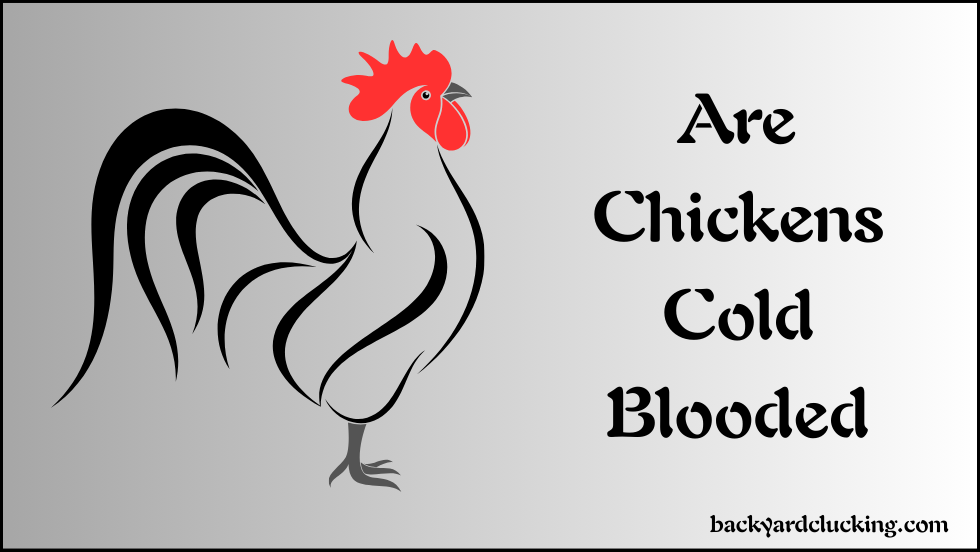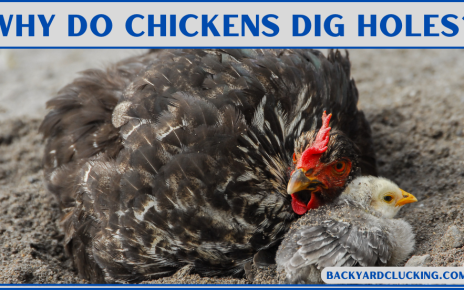As a biologist, I know that understanding the thermoregulatory characteristics of organisms is essential to comprehend their behavior, adaptation, and physiology. This article will explore the debated question: Are chickens cold-blooded? To do so, let’s first define the terms cold-blooded, warm-blooded, and ectothermic about animal body temperature regulation.
Cold-Blooded, Warm-Blooded, and Ectothermic: What Do They Mean?
Cold-blooded animals, also known as ectothermic animals, primarily rely on external heat sources, such as sunlight or other environmental factors, to regulate their body temperature. Examples of cold-blooded animals include reptiles, amphibians, and most fish.
Warm-blooded animals, or endothermic animals, produce heat internally through metabolic processes to maintain a constant body temperature regardless of their surroundings. Examples of warm-blooded animals include mammals and birds.
Thermoregulatory Mechanisms of Chickens Versus Mammals
Now that we have defined these terms let’s compare and contrast the thermoregulatory strategies of chickens – a type of bird – and mammals.
- Chickens: Unlike most reptiles, chickens can produce their heat internally. They regulate their body temperatures effectively by adjusting their metabolic rate and physiological processes like panting, fluffing their feathers, or seeking shade when necessary. This ability to maintain a steady body temperature means that chickens are, technically, warm-blooded animals.
- Mammals: Mammals, like chickens, are also endothermic. They maintain a constant body temperature by producing heat from internal metabolic processes and adjusting to their environment. Mammals also use several behaviors to regulate their body temperatures efficiently, such as sweating, panting, shivering, or seeking warmer or cooler climates as appropriate.
Metabolic Rate, Size, and Activity: How Do They Factor In?
The chickens’ metabolic rate, size, and activity levels all contribute to their ability to regulate body temperature.
- Metabolic Rate: Chickens have a relatively high metabolic rate, allowing them to generate considerable heat internally. This is essential for maintaining a constant body temperature.
- Size: The size of a chicken affects its surface-area-to-volume ratio, which in turn impacts how efficiently it can lose or gain heat. A smaller surface-area-to-volume percentage, as found in more giant chickens, can reduce heat loss, while a higher ratio, as seen in smaller chickens, increases heat loss. Consequently, more giant chickens are better at retaining heat than smaller chickens.
- Activity: A chicken’s activity level ultimately affects its internal heat production. When chickens are more active, their metabolic rate increases, producing more heat. Conversely, their metabolic rate decreases when they are resting or sleeping, lowering their internal heat production.
The Importance of Maintaining a Steady Body Temperature
A steady body temperature is critical for optimal physiological and reproductive performance in chickens. This temperature consistency ensures that the various biochemical processes within a chicken’s body function efficiently, such as digestion, absorption of nutrients, and cellular activity.
Moreover, maintaining a constant body temperature is essential for reproductive success as it ensures that incubation and embryo development proceed correctly.
Conclusion
In conclusion, while chickens may exhibit some characteristics commonly seen in cold-blooded animals, they are warm-blooded animals that rely on internal and external mechanisms to maintain a steady body temperature.
Their metabolic rate, size, and activity levels all play a role in their ability to thermoregulate efficiently, essential for optimal physiological and reproductive performance. Understanding the thermoregulatory characteristics of chickens can help us better understand their behavior, adaptation, and physiology.



